This interview was conducted in April of 2014 by Vicente García, Editor of Dolmen Magazine. Dolmen is produced and distributed in Spain and is nearly the last comic-book fan magazine of its kind, with a distinguished, 22-year history in publishing. Since it was published in Spanish, we decided to reissue the most comprehensive interview that Bob Layton has done to date in its original English version.
Vicente: How did you begin reading comics?
Bob: I learned to read from comics when I was only four years old, after my older sister Sue Ann became bored with reading the same comic to me about fifty times. That comic was a Showcase issue featuring The Challengers of the Unknown. Subsequently, I was skipped a grade when I entered the school system and wound up graduating High School at barely 17 years old. As I matured, I began to comprehend the true potential that the medium had and became obsessed with becoming part of it
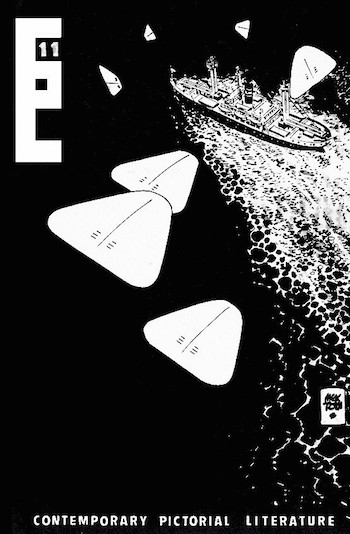
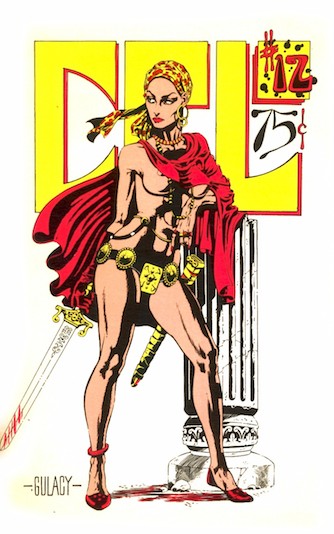
Vicente: How did you begin professionally? I understand that you started as a comic book seller and with a fanzine named CPL with Roger Stern.
Bob: I met Roger Stern (who worked for a local radio station in Indianapolis.) and we began publishing fanzines out of my little apartment. CPL (an overblown title which stands for Contemporary Pictorial Literature) was our main ‘zine. It was an extremely popular fan publication for its day and eventually led us into a working alliance with Charlton Comics, with Sterno and I producing and publishing the now-famous Charlton Bullseye magazine.
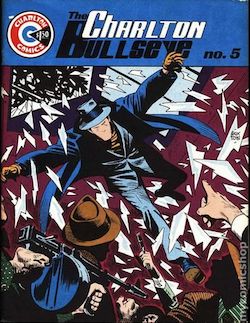 Vicente: How Charlton Bullseye started?
Vicente: How Charlton Bullseye started?
Bob: At that time in the mid ’70’s, Charlton was struggling to re-establish some sort of footing in the superhero market. Marvel and DC had house fan publications of their own, namely F.O.O.M. and Amazing World of DC Comics. Charlton wanted to establish a fan presence, as well and formed an alliance with our Indianapolis, Indiana-based CPL/Gang to produce the Charlton Bullseye. They gave us unlimited access to unpublished material from their vaults by the likes of Steve Ditko, Jeff Jones and a host of others. While I was producing Bullseye, I began taking on inking work on their anthology books. But I never actually worked in the Charlton offices. I DID, however, live about two blocks away from their Derby, CT. offices.
Vicente: You were an apprentice of Wally Wood. How was he? What do you think it was the most valuable lesson he gave you?
Bob: The close association with Charlton (and production wizard, Bill Pearson) led to my meeting Wally Wood and becoming one of his apprentices. He was a brilliant teacher whose formula for clear, concise inking set the stage for the look of the modern age of comics. Woody hammered one, basic concept into my head; Time and again, he imparted to me that a good artist should be in service to the tale being told… a “slave to the story”. That served me well in the years that followed. In the evening, Woody and I would sit out on his porch and play guitar together. He was an accomplished folk guitarist and his style was reminiscent of a Wood Guthrie and Pete Segar. The most valuable thing I learned as his apprentice was how to work for reproduction and to utilize black and white values to combat the poor color process of that era. He taught me how to use Zip-a-tone shading films to create textures and more subtle values. That technique became a huge part of my later success as the artist on Iron Man.
Vicente: How did you started in Marvel in the 70’s?
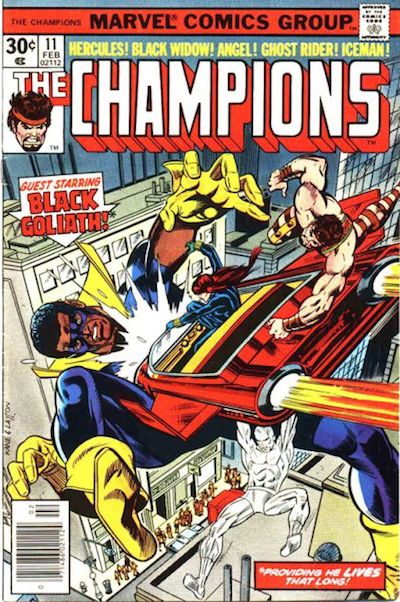 Bob: Occasionally, I would deliver pages for Woody when I made a trip into NYC from Connecticut. One day, I was in the Marvel offices…handing in Woody’s pages to the production dept. So, I used the opportunity to show my samples around while I had ‘my foot in the door’. When I passed the Art Director’s office, I heard John Romita on the phone, frantically trying to find someone to ink a desperately late issue of Iron Man by George Tuska. Blissfully unaware of the consequences, I stuck my head in his doorway and said I could get the job done in the four or five days that was left on the schedule. It was an utter fabrication…but I REALLY wanted to work for Marvel Comics! Johnny gave me the pages and said, “Show me what you can do, Kiddo.” Panicking, I ran down Madison Ave. to Continuity Associates, where a lot of my fledgling contemporaries worked for Dick Giordano & Neal Adams. (The gang at that time comprised of Terry Austin, Bob Wiacek, Joe Rubinstein, Bob McLeod, Carl Potts and others) Like the troupers that they all were, they pitched in on the inking and we finished the entire book in less than four days. Once I turned the job in, I never heard from anyone from Marvel for weeks. I’m sure I have permanently destroyed any chance of ever getting work there again. Then, about a month after the George Tuska job, a package arrives on my doorstep. I open it to find a complete issue of pencils on the Champions. I presumed that it was sent to me in error, so I called the Marvel offices to see where they want me to forward the material. But my utter amazement, John Romita tells me that I’m the new regular inker on the book.
Bob: Occasionally, I would deliver pages for Woody when I made a trip into NYC from Connecticut. One day, I was in the Marvel offices…handing in Woody’s pages to the production dept. So, I used the opportunity to show my samples around while I had ‘my foot in the door’. When I passed the Art Director’s office, I heard John Romita on the phone, frantically trying to find someone to ink a desperately late issue of Iron Man by George Tuska. Blissfully unaware of the consequences, I stuck my head in his doorway and said I could get the job done in the four or five days that was left on the schedule. It was an utter fabrication…but I REALLY wanted to work for Marvel Comics! Johnny gave me the pages and said, “Show me what you can do, Kiddo.” Panicking, I ran down Madison Ave. to Continuity Associates, where a lot of my fledgling contemporaries worked for Dick Giordano & Neal Adams. (The gang at that time comprised of Terry Austin, Bob Wiacek, Joe Rubinstein, Bob McLeod, Carl Potts and others) Like the troupers that they all were, they pitched in on the inking and we finished the entire book in less than four days. Once I turned the job in, I never heard from anyone from Marvel for weeks. I’m sure I have permanently destroyed any chance of ever getting work there again. Then, about a month after the George Tuska job, a package arrives on my doorstep. I open it to find a complete issue of pencils on the Champions. I presumed that it was sent to me in error, so I called the Marvel offices to see where they want me to forward the material. But my utter amazement, John Romita tells me that I’m the new regular inker on the book.
Vicente: In the 70’s you also did some work for DC. Why did you return to Marvel? How was DC at the time?
Bob: After the Champions, I signed an exclusive one-year contract with DC –after they made me ‘an offer I couldn’t refuse’. Just before my contract expired at DC, David Michelinie and I had formed our co-plotting partnership there, working together on Star Hunters and Claw-the Unconquered. We both sensed the impending ‘Implosion’ and didn’t want to be a casualty of it. So we agreed to leave the company for greener pastures. Together, we went to Marvel and interviewed to work as a team there. We were given a choice of lower end books to work on and I jumped out of my seat when I realized that Iron Man was one of those choices.
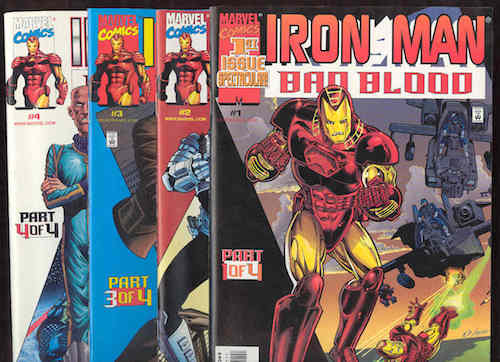
Vicente: OK, now we’ll talk about Iron Man. How did you begin in that series?
Bob: When David Michelinie and I took over the Iron Man series in 1979, the book was selling under 90K, which was termination numbers in those days. I suppose Marvel figured that these two newcomers could hurt anything because they gave us a free reign to do whatever we wanted with the title. Before we took over the series, Tony Stark was little more than a vehicle used to get the armor on him and go into action. David and I felt that it was more important concentrate on the man inside the suit than the suit itself. That’s why we introduced an entire cast of new supporting characters and changed the emphasis of the series to the world of corporate intrigue. Story-wise, David Michelinie was never a “hardcore Marvel fan” in his youth. David’s lack of a personal history with Iron Man’s mythology proved to be a tremendous asset–translating into his fresher approach to the character. I also was attracted to the character because he doesn’t have super powers like Superman or Spider-man. His abilities comes from the technology created by his own genius, which makes him much more credible to me as a creator. By the time we left, sales had grown to around half-a-million copies a month. So we must have done something right! And– the rest is history, as they say.
Vicente: How did you co-plot the stories with David Michelinie?
Bob: David and I had a 50/50 relationship on the plots, with both of us contributing equally to the story and character development. David and I have always complimented each other creatively and our association on Iron Man was one of the most fulfilling times in my career. From the beginning of our collaboration at DC in the mid-70s, David and I continued working together for forty years, which has to be some sort of Guinness world record for comics.
Vicente: In Iron Man were introduced Bethany Cabe, Mrs Arbogast and Jim Rhodes. Do you remember how they were created? Did you feel the supporting characters gallery in Iron Man was almost non-existant?
Bob: On the original two runs of Iron Man that David Michelinie and I worked together on, my favorite supporting characters were Jim Rhodes, Bethany Cabe, and Mrs. Arbogast, Tony’s personal secretary. All three of these were characters that David and I created fulfilled a need in the series for Tony Stark to have normal human foils for him to bounce ideas and conflicts off of. Mrs. Arbogast was particularly funny to do because of her acerbic wit and her immunity to Tony’s charm. We had no idea that Jim Rhodes would be such a mainstay when David and I created him back in Iron Man #118. He evolved from a small supporting role into a large player in our storylines. I don’t think Dave or I knew at the time how big he would become in the series. There weren’t a lot of strong African American characters in the Marvel Universe at that time and David and I wanted to give Tony a foil with a dissimilar background from his own. One of the biggest problems with comics in general is that few are couched in the real world. Everyone is a mutant or alien or cyborg. The supporting characters exist to ground the reader in a sense of reality. Through their eyes, we witness the fantastic and react in a believable human manner. Rhodey was created to ground Tony Stark’s fantastic exploits in some degree of reality.
Vicente: You also created Justin Hammer, a major villain in the series. Do you remember how was he created?
Bob: As well as being a tribute to the late, great Peter Cushing, David and I needed to create a corporate counterpart for Tony Stark. Hammer was originally created to be a cautionary tale of what Tony Stark could have become if he stayed on his path as a global war profiteer. As benevolent as Tony was portrayed in our series, Hammer represented the other side of that coin. They were two men essentially in the same line of work, but with diametrically opposed moral views.
Vicente: The most important storyline was the alcoholism crisis, no doubt. It’s still a highlight in Iron Man story. How do you remember those issues? Did you have some problem in the Marvel offices since it was a risky movement?
Bob: The “Demon in the Bottle” saga, which culminated in Iron Man #128, is now considered a milestone event by most comic book historians. At the time, you never anticipate that you’re creating comic history. It was just another episode in the life of Tony Stark. David and I felt that we needed to create a personal problem for Tony Stark that fit the world of corporate business that we set him in. Given his passions and somewhat compulsive behaviors at time, the alcohol story seemed somewhat to be a natural.
Vicente: Denny O’Neil did another alcoholism crisis later in the series. Did you read it? What was your opinion about that storyline?
Bob: I didn’t read it. But my understanding, from the fans, is that it went on for too long.

Vicente: Obviously, I must ask you about your opinion in the Iron Man movies since they used material from your stories.
Bob: As far as the first Iron Man movie’s storyline, my overall impression is that it was one of the better comics-to-film adaptations to date. I did get some goosebumps when I initially saw it. Robert Downey Jr. totally nailed the role of Tony Stark. And the producers stayed true to the spirit of the technologically-based hero. I had the opportunity to have several conversations with Robert Downey Jr. and he has always been passionate about his portrayal of Tony Stark. I was flabbergasted when he showed concern that I might not have approved of his performance. I actually laughed and asked him if he was kidding? I told RJ that I had concerns, when his casting was announced, that he might be too old for the role. (our Tony in the comics was always around 35 years old). However, I assured Downey that, as soon as I saw the first clips of him as Stark, my concerns immediately evaporated.
Some films seem like they are merely vehicles for merchandising and Iron Man 2 was guilty of that. There were simply too many armored characters running around and Marvel Studios doubled down with even more so in the third film. Where are the great non-armored villains like Spymaster, Mandarin (non-Kingsley) and the Ghost? And they’ve jacked-up Justin Hammer forever, as far as serious film villains go. Unfortunately, what we got in Iron Man 2 was a clownish, moon-walking, sycophant groupie of Tony Stark.
Telling comic-based stories are like composing an opera. Operas have lavish costumes, are performed on a stage and are written in Italian. When you bring in someone in Hollywood who doesn’t fully understand the comic book genre (Like writer/director Shane Black, for instance), you get the opera written in English, staged in a deserted alleyway and performed in street clothes. Comic fans are like traditional opera lovers. They want their operas pure. That’s what Iron Man 3 felt like to me, a bad opera. It seemed like an ill-conceived, G-rated version of “Kiss Kiss Bang Bang”. For the record, I’m not stating that it’s the most horrible thing I’ve witnessed in recent cinema (that honor still goes to the insanely-stupid ” Prometheus”). But it fails on so many levels and that make me very sad. In Shane Black’s eyes, Stark is a bumbling, inept engineer who can’t get any of his inventions to work anymore? Are you kidding?! Didn’t he watch the first film? TONY STARK MADE THE FIRST ARMOR IN A CAVE WITH A ROCK, A BALL-PEEN HAMMER AND A FRIGGIN’ TIN CAN!!! Then- he proceeded to kick everyone’s ass! Give me a break!
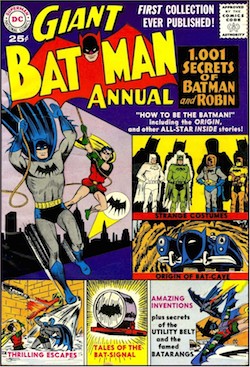 Vicente: You introduced the concept of the specialized armors for underwater, stealth or space missions. How did that get started?
Vicente: You introduced the concept of the specialized armors for underwater, stealth or space missions. How did that get started?
Bob: Technology is constantly evolving and so should Iron Man. That was my thinking when I originally created the concept of the specialty armors. There’s a huge difference between a stock car and Indy car. Each is designed for specific tasks and THAT was our thinking when approaching the Iron Man armor. It’s unrealistic to presume that one device can adapt to all situations and environments. Making this fictional technology believable is the key to making the entire premise work. As many Iron Man fans know, my penchant for specific task Iron Man armors came from an old Batman story I read as a kid where the Caped Crusader had specialty costumes that he used to fight in the snow (white costume), fight in the trees (green costume), and goofy stuff like that. However, as silly as the story was, it had a profound influence on me later in life and got me thinking about specific costumes for specific tasks. Obviously, that spilled over to the Iron Man series once I got on board.
Vicente: In your second run in Iron Man, the penciller was Mark Bright, not John Romita Jr. Did that affect in some way the stories you wanted to do? How do you remember those issues and specially the Armor Wars?
Bob: After that first run, David and I split for a time to pursue solo careers. I went on to write and draw the two Hercules mini-series and David moved on to write the Avengers and the Amazing Spider-Man. Then, years later, after the title began to tank again, we were asked to come back to Iron Man to revitalized it once more, first with the revolutionary Silver Centurion armor design and then, with the highly-successful story arc—“Armor Wars”. When we returned, it was obvious that the previous creative teams had strayed away from the groundwork we had laid with our first run. So, David and I concocted the Armor Wars saga as a vehicle to put things right. I guess it worked! I loved working with Mark Bright. Although JRJR was probably my favorite penciller, Doc Bright brought a new energy to the team that helped propel “Armor Wars” into the consciousness of Marvel readers.
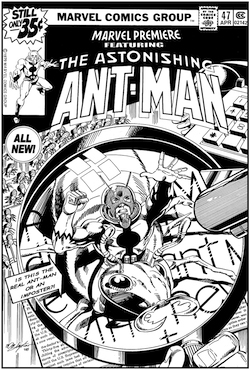 Vicente: In Marvel Premiere #47-48, you revamped Ant Man with Scott Lang with a fondly remembered two-part story. Why didn’t you use Hank Pym? How was the creation of those issues? Do you think some of your material will be used in the forthcoming movie?
Vicente: In Marvel Premiere #47-48, you revamped Ant Man with Scott Lang with a fondly remembered two-part story. Why didn’t you use Hank Pym? How was the creation of those issues? Do you think some of your material will be used in the forthcoming movie?
Bob: At that time, Hank Pym had become an unstable, unlikable character. I believe the mandate was to humanize the character of Ant-Man, in this instance, to make him a single parent in the persona of ex-con Scott Lang. I’m glad you asked me about those issues because many people mistakenly give John Byrne credit for co-creating those characters. John only contributed blue pencil layouts for those two stories and had NOTHING to do with the creation of Scott Lang. The other thing that bugs the Hell out of me is that Edgar Wright, the director of the upcoming Ant-Man movie, credits John Byrne’s cover to Marvel Premiere #47 as the inspiration for his involvement in the film. I penciled that cover—not John Freakin’ Byrne! And yes… Wright will be using Scott Lang as his version of Ant-Man.
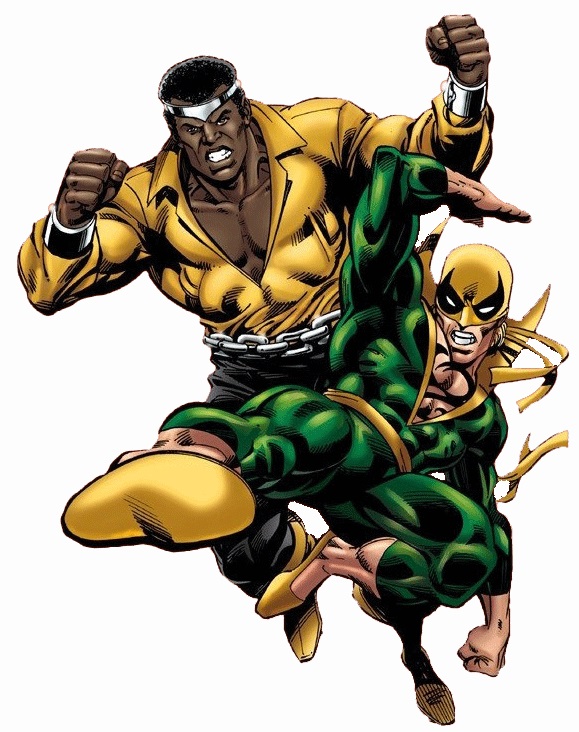 Vicente: One of my favorite works from you, and one that is sadly unknown for many readers, is your stint in Power Man and Iron Fist where you worked with Mary Jo Duffy in the plots and with Kerry Gammill penciling. How do you see your issues there?
Vicente: One of my favorite works from you, and one that is sadly unknown for many readers, is your stint in Power Man and Iron Fist where you worked with Mary Jo Duffy in the plots and with Kerry Gammill penciling. How do you see your issues there?
Bob: I was a huge fan of the original Archie Goodwin/ Billy Graham version of Luke Cage. I think it was some of the best of that era. Jo Duffy and I were pals and she recognized my passion for those characters and asked me to contribute. It was a ton of fun. Denys Cowan and I were slated to take over the book, at one point. Unfortunately, fate conspired to pull us away to different projects, so those plans fell apart.
Vicente: In “Hercules: Prince of Power”, you were a complete author in one of the most interesting limited series of that time in Marvel. You used the character in a space opera environment, far from the usual superhero/mythological type of story. It seems like you were in a moment where you wanted to try a lot of new things and take a few risks. How do you remember the creation of Hercules?
Bob: I always had a soft spot for secondary characters. Keep in mind that the Star Wars craze was in full swing in the early eighties and it got me thinking about creating a similar venue for Hercules to romp in. Since Hercules was an immortal, I decided to take the character out of the current continuity and place him in a time and place that wouldn’t have immediate repercussion to the monthly books or his appearances in the Avengers. At that particular time, Marvel was looking to experiment with concepts that had a finite beginning and end. When I heard that, the notion of doing Hercules as that limited series popped into my head. I’ve always loved tongue-in-cheek adventure movies like the “The Three Musketeers” or “The Adventures of Robin Hood”. My take was to place him in a galactic environment, where there were powerful beings and looming situations that were far greater than the comfort zone of his own earthly confines. In that context, he would have to face his own shortcomings and grow-up as a consequence. However, I tried to make it abundantly clear in the series that he would resist that growth at every opportunity. In the Marvel universe, prior to my first mini-series, Herc had been portrayed by Stan Lee as a conceited, arrogant, but likable jerk. My childhood memories were of Hercules bashing people just for the sport of it! That became the genesis of “The Gift” in my stories. Hercules was comfortable getting his own way by using his godlike might. He was an adolescent bully, in a fashion. Not that he had a mean streak or was a cruel person, but merely someone who was not experienced in hearing the word, ”No”. I set out to refine his character in my stories. At that period of time in Marvel’s history, I felt that their books, as terrific as they were at that particular period, took themselves WAY too serious with stuff like Frank Miller’s Daredevil, Claremont’s X-Men and even David Michelinie and my Iron Man, for that matter. I wanted to do something to lighten things up in the “House of Ideas” a bit. The biggest problem was convincing the editorial ‘powers-that-be’ that poking fun at the Marvel Universe wouldn’t do permanent damage to the comic company as a whole. It took a bit of pushing to have a finite series about a drunken super-hero published at Marvel in that era, but they were totally willing to do it once they understood the context of what I was planning. So, I put together a proposal and pitched it to the Powers-That-Be. Additionally, I had always wanted to try my hand at writing comedy and Herc seemed to be a perfect foil for my particular brand of humor.
Vicente: After the limited series, there was a sequel, a graphic novel and some time ago a new miniseries. It seems like your name is “related” to Hercules. What have you tried to do in the other stories?
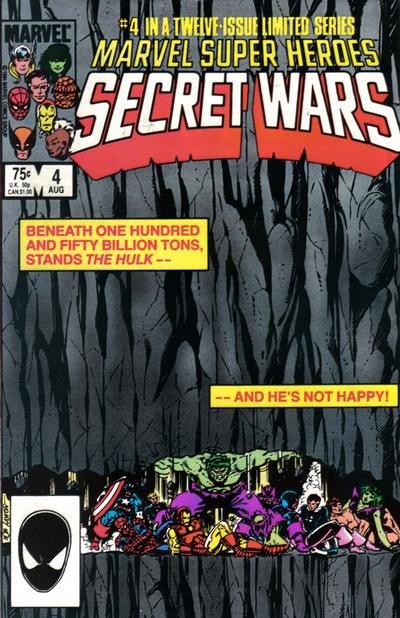 Bob: At the time that I was working on Iron Man, I used the experience to learn as much about writing as possible from my creative partner, David Michelinie. I had set a goal for myself to work as a writer/artist at some point in my career. So, when the opportunity arose to do the Hercules mini-series, I jumped at the chance of fulfilling that career goal. The most memorable consequence of working on the Hercules mini-series is that it truly launched my career as a writer in the comics industry. Thanks to the success of the two volumes, and the subsequent graphic novel “Full Circle”, I was able to fulfill my career goal of becoming a mainstream writer/artist. And after Hercules, I was very fortunate to have had many great opportunities offered to me, as a result.
Bob: At the time that I was working on Iron Man, I used the experience to learn as much about writing as possible from my creative partner, David Michelinie. I had set a goal for myself to work as a writer/artist at some point in my career. So, when the opportunity arose to do the Hercules mini-series, I jumped at the chance of fulfilling that career goal. The most memorable consequence of working on the Hercules mini-series is that it truly launched my career as a writer in the comics industry. Thanks to the success of the two volumes, and the subsequent graphic novel “Full Circle”, I was able to fulfill my career goal of becoming a mainstream writer/artist. And after Hercules, I was very fortunate to have had many great opportunities offered to me, as a result.
Vicente: I’ve read you did some designs for the Secret Wars toys besides some work in the maxi-series of the same name, the first big event in Marvel. How do you remember those jobs?
Bob: Not much to say. I was simply filling-in for a very tired Mike Zeck, who was a friend of mine. Later, I was asked to design the action figures for Mattel when the series was in production. There were design limitations that had to be addressed to make the toy line work from a manufacturing standpoint, so they brought me in to accommodate those issues. The Secret Wars toy line was recently re-released by Hasbro Toys and they asked me to design the new clam-pack art for that product , as well.
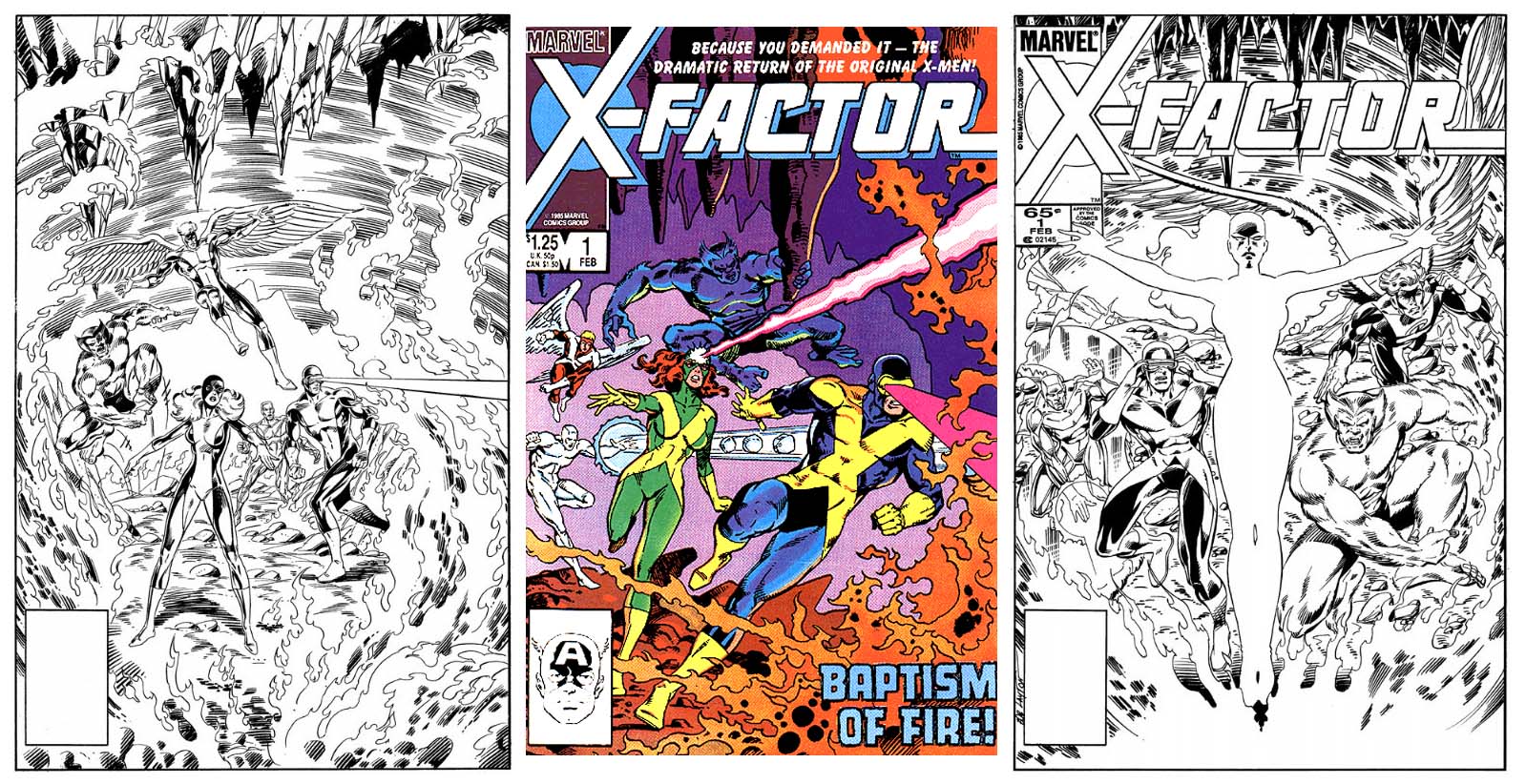
Vicente: You launched X-Factor, where the original X-Men were disguised as mutant hunters, but you stayed a few issues. What happened? What were your plans for the series?
Bob: I wasn’t much of a fan of the new X-Men. To me, The Beast, Marvel Girl, Iceman, The Angel and Cyclops were the real X-Men. So, I pitched a proposal to bring back all the originals. It was an exciting assignment for me, being at the helm of that book, writing and inking it. And, being able to collaborate with my good friend and super-talent Butch Guice didn’t suck either. To be fair, there were many hands involved in its evolution after I pitched the initial concept. However, when I brought back the original X-Men (with the newly resurrected Jean Grey), it became a lightning rod for inter-office politics. Jean Grey’s resurrection opened up a vicious can of worms. In the initial premise that Jackson Guice and I submitted, Jean Grey was not part of the group. It was the Dazzler. But Kurt Busick and John Byrne came up with a way to revive her and, of course, why would I refuse to use her? But from that point on, the rest of the story devolves into inter-office bitch-fest. Things didn’t go smoothly from “Boo”. My Editor, Mike Carlin, was wrongly fired off of the series after the first issue. The Editor-In-Chief insisted on having a third of the first issue rewritten and redrawn (and not for the better, in my opinion). Controversy and problems continued from issue to issue until I had simply had enough.
Vicente: Chris Claremont was against publishing more mutant titles and I remember reading at the time in some magazines that putting his friend Louise Simonson in your place was a way to please the writer of the Marvel best seller. Has this story some truth?
Bob: Not really. I think I answered that question already. The X-Offices hated that an outsider was usurping what they believed to be “their properties” and made my experience on the book a living Hell. So…I finally dropped X-Factor and moved on. My tenure on the series was mostly tumultuous… at best. It was one of the few, bad experiences that I’ve had during that era at Marvel. My first rule of thumb was: “Always have fun doing comics”. And X-Factor had ceased to be fun very quickly.
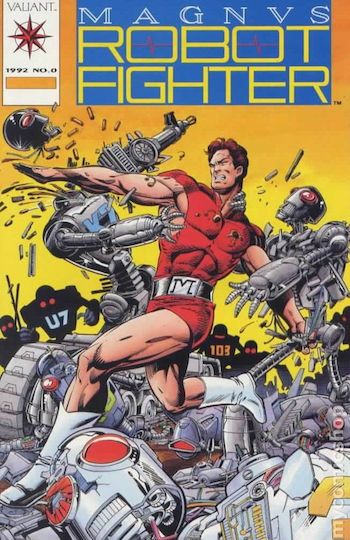
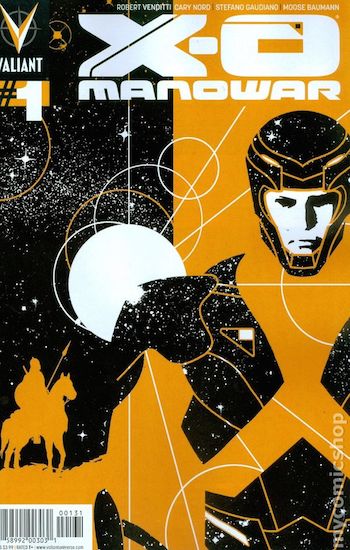
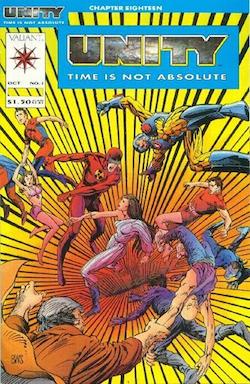
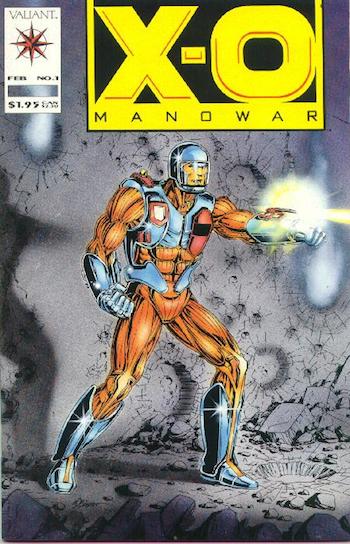
Vicente: Valiant and Acclaim: How did you ended up co-founding that publishing house? What differences with the Marvel or DC comics were you trying to do?
Bob: Valiant started up in ’89, in a fifth floor loft in downtown Manhattan. The place was a total rat-trap. Valiant had about ten people initially and we had to share the office space with entertainment attorney Lauren Davis, the daughter of record mogul Clive Davis, who worked with Steve Massarsky in representing recording artists. At that time, the comic buying public was tired of what the Big Two were offering, with the emphasis of the mainstream titles becoming more art-driven than story-driven. Good writing had taken a backseat to flashy, gimmicky packaging. Jim Shooter brought me in from Marvel to manage the art and editorial on the Western Publishing/ Gold Key line of superheroes (Magnus, Solar and Turok). Only after I made the move did I find out that the decision had been made to sit on those properties and pursue Nintendo and WWF licenses instead. I argued with Massarsky and Shooter that those two audiences are notorious for not reading—period! But they had dollar signs in their eyes and thought they could pull in millions from both franchises. It was a MAJOR miscalculation on their part. We made the books… and Valiant couldn’t give the damn things away. Reality raised its ugly head when they discovered that gamers use their leisure time to play video games—not to read comic books. After millions of dollars were lost to those ill-conceived projects, they finally decided to go to the Gold Key properties, which now became a last ditch effort to save the company from insolvency. Every day, the staff and I lived under the threat of closure at a moment’s notice. Not a fun time. However, the superhero books started coming out and the situation improved. I believe that the real turn-around happened when my friend and co-collaborator at Marvel, Barry Windsor-Smith, decided to lend his considerable talents to Valiant. Things started to turn around for us after that. I know for a fact that it was Barry that gave the line a true credibility in the marketplace. Barry was, undeniably, one of the most prestigious creators in the industry and his contributions elevated the overall efforts of everyone creatively connected to Valiant as writers or artists.
Vicente: How was your relationship with Jim Shooter?
Bob: It was a double edged sword. Valiant fans generally fall into two categories: One group believes that Jim Shooter created everything and all the other creatives were merely his hired flunkies… and the ones who believe the truth that Valiant was the total creative effort of Jim, Steve Massarsky, Jon Hartz, Barry Windsor-Smith, me and a host of other talented contributors. These days, I steer away from discussing Valiant altogether. There’s been too much revisionist history and general bullshit for my tastes. Jim had a very abrasive management style that alienated a lot of the creative staff. At the same time, he was instrumental in a lot of positive changes to Marvel. But to be perfectly honest, his behavior became much worse at Valiant than at Marvel. Most Valiant fans will not want to believe anything I say and it’s hard to get the truth past the revisionist history that’s been generated over the years by certain disgruntled parties. However, I kept a daily journal of every event that transpired at Valiant, from the day I started– to the day I exited. I can recall every day in vivid detail, thanks to those journals. Granted, it’s written from my perspective, but the chronology is historically accurate.
Nine months into the start-up, Triumph (the venture capitalists that funded Valiant) dismissed CFO Winston Folkes and placed Fred Pierce (yes–the same Fred Pierce that now runs the new Valiant) in our offices to monitor Jim Shooter’s business activities and report back to them. (They now had a crisis of confidence in Shooter’s business acumen) In a repeat of his history at Marvel, Shooter’s relationship with upper management became antagonistic in nature. They were incredibly upset that their investment money had gone up in smoke and we weren’t even out of the gate yet. Every day, the staff lived under the threat of closure at a moment’s notice. Not a fun time. Jim was a brilliant writer and he was a very persuasive individual. But, somewhere down the line, the work became about HIM and not the stories. Ultimately, it became a pattern of personal behavior that eventually led to his downfall as a publisher and Editor-In-Chief.
Vicente: How did you ended up as Editor-In Chief? Did you enjoy that work?
Bob: Once Shooter was dismissed, Triumph came to me with a simple offer—take over the reins of the company… or they would shut it down. What choice did I have? I had been running the day-to-day operations of the editorial department as it was. Shooter had lost the loyalty of most of the creative staff by that time and I was struggling to hold the company together as a working unit. So, the transition of power was fairly smooth when I took over. In the end, Valiant turned out to be a grand experiment that had high incredible highs…and unbelievable lows. In many ways, it was the Camelot of comic book companies…a wondrous time that this industry will probably never see again. We were a family…with everyone sharing in the work and benefits. We all knew it wouldn’t last…but it was great while it did. Most of us keep in touch—twenty-some years later, because of the bond that we shared as cogs in a huge, creative dream machine. One of my fondest memories was the day that Valiant won “Publisher of the Year” from Diamond in 1993 (as voted on by all the comic shop retailers in America and Canada). My little company (born of controversy, blood, sweat and tears) had beaten out the Big Two companies—a feat that had never been accomplished before. I fondly recall making my acceptance speech in front of hundreds of cheering retailers. It was a pinnacle for me, as well as for our staff of talented creators and business people.
Vicente: Of all the work you did in Valiant, what are your favorites?
Bob: “The Second Life of Dr. Mirage” was my favorite Valiant title to write. It was specifically created by me at Valiant as an attempt to attract more women to comics and quickly became one of my all-time favorite career projects. Unfortunately, it never succeeded in bringing in significantly more female readers. I guess the industry wasn’t ready for a romantic/comedy series.
Vicente: What did you think about the Acclaim reboots and what do you think the current series of the characters you created?
Bob: To be perfectly honest, I haven’t read them. With all of the revisionist history posted on the Internet concerning the company’s politics over the years has left a very bad taste in my mouth. But, I wish Dinesh, Fred and Warren well. Nothing would make me happier than to see them succeed. Without the rights to the original Gold Key characters (Magnus, Solar and Turok), the Valiant comics library is one of the biggest “White Elephants” in intellectual property history. That’s a crying shame that the new Valiant has not been able to secure the rights to this point.
Vicente: The limited series L.A.W. used the old Charlton characters. The most obvious take will be to make them more similar to Watchmen, but you went in a different direction. What’s the story behind this series?
Bob: It was extremely nostalgic to connect with the Charlton characters after my fan association with them. However, I felt that the entire project was a big mistake and was doomed from square one. Originally, I had proposed it as an Elseworld series that explored the time gap that began when their series’ ended at Charlton and the time they first appeared in the DC Universe (about ten years). It’s a shame too, because it was a much better story that the one that appeared in The L.A.W.. However, the powers-that-be convinced Dick and me that it would sell better if we set it in the regular DC Universe. In order to do that, “The Charlton Project”, as we called it, had to be seriously retooled. Subsequently, it started getting edited by committee, with each editorial department insisting we “Do this” or “Don’t do that”. As a result, the content became diluted to the point that I no longer recognized it as the story I had created. At DC, a creator has to deal with a certain amount of bureaucracy and red tape. Unfortunately, it began to simply beat the enthusiasm out of me. We were told, at the beginning of the project, that we were going to get some big promotions for the series but it never materialized. Without any promotion or crossover push, the books didn’t pull in the numbers we had hoped for. It’s too bad it wound up the way it did. We had big plans for those characters down the road in the proposed regular series.
Vicente: “Iron Man: Bad Blood” marked your return with Michelinie to Iron Man. And you penciled that series too. Why did you wanted to do in that limited series you haven’t done before?
Bob: For the most part, it WAS as easy as slipping on an old glove. But in many ways, we had our hands tied by the ‘new direction’ Marvel had chosen for the Iron Man series. They had removed many of the things that I felt defined Stark (i.e.; Playboy lifestyle, cutting-edge technology manufacturing and his extravagant tastes.) These are some of the things that help to set him apart from other characters in the Marvel Universe. He had become way too politically correct for my tastes and that created several plotting roadblocks. Originally, Bad Blood was part of the regular continuity but Quesada pitched a fit when Bobbie Chase told him that Michelinie and I were doing a story arc on his book. As a compromise, Bobbie turned it into a mini-series to appease Joe. I was also trying something new– to draw in a photo reference style. But my fans actually HATED IT! “Bad Blood” left a bad taste in my mouth. Too bad.
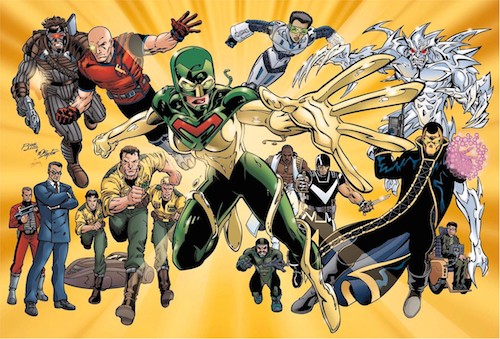
Vicente: You started a new publishing house, Future Comics, but it didn’t last. What happened?
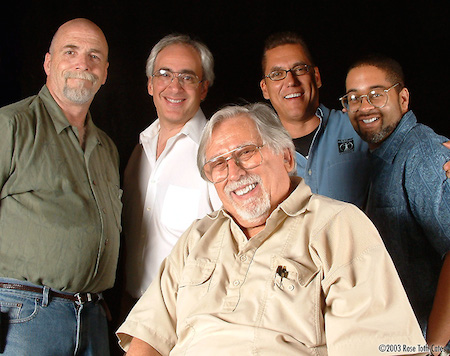 Bob: One of the major reasons why Dick Giordano, David Michelinie and I started Future Comics back in 2002 was that nearly everyone we talked to in the Direct Market voiced that they were tired of being treated callously by the existing system. They seemed to be waiting for someone to have the balls to challenge the dominance of Diamond, DC and Marvel. Future Comics was the only comics company to ever attempt self-distribution in the U.S. and we tried to change the system by bypassing Diamond and offering the direct market a better deal, as well as offering the publications to individual readers via the Internet. We offered the Direct Market free shipping (not available through Diamond or anyone else). We gave them deeper wholesale discounts than Diamond. We made our products 100% returnable (free, for all intents and purposes) while all sales from Diamond are non-returnable. By reducing lead time (we solicited via the internet within 30 days before shipping) and eliminating layers between creator/publisher and retailer/reader, Future reacted more quickly and communicated more readily with the consumer. I liked the distribution side because I got to talk to the retailers myself, and sometimes, I’d make a sweetheart deal with somebody who’s been extremely supportive of us. Or– I’d sweeten the pot a little to get them to handle our books for the first time. The main drive was getting our entertainment in the hands of readers and working with all the retailers that assisted us in doing that. I had a terrific staff that made regular calls to retailers, packed and shipped the books and did the follow-ups on the orders. For the retailer, since we shipped all of our titles to them at the same time, they saved money on the freight side, as well as received deeper discounts than they would have with Diamond. It was the advent of the internet that made all that possible. That was something that wasn’t practical during my Valiant days. Technology had certainly opened new doors to selling and distributing merchandise. Having met most of the retailers at one time or another, Dick Giordano and I felt it would make sense to create a business where the retailers would actually have some input in our decisions. We would have a company that’s friendly to them and tries to give store owners a break with a product that they can actually make a decent margin on. We knew how tough it was for most retailers just to keep the doors open, so we wanted to create a line of books that didn’t “break the bank”, while, at the same time, maximized their discounts and the service they received. But unfortunately, everything we offered wasn’t enough to get the retailers off their duffs and support a change. Plus, it turned out that over 50% of North American comic shops were not connected to the internet in 2003. That came as a real shock to me—I thought all comic shop owners were cyber-geeks! But, I still believe that the business model is sound and that, one day, someone will follow in our footsteps with the concept of self-distribution.
Bob: One of the major reasons why Dick Giordano, David Michelinie and I started Future Comics back in 2002 was that nearly everyone we talked to in the Direct Market voiced that they were tired of being treated callously by the existing system. They seemed to be waiting for someone to have the balls to challenge the dominance of Diamond, DC and Marvel. Future Comics was the only comics company to ever attempt self-distribution in the U.S. and we tried to change the system by bypassing Diamond and offering the direct market a better deal, as well as offering the publications to individual readers via the Internet. We offered the Direct Market free shipping (not available through Diamond or anyone else). We gave them deeper wholesale discounts than Diamond. We made our products 100% returnable (free, for all intents and purposes) while all sales from Diamond are non-returnable. By reducing lead time (we solicited via the internet within 30 days before shipping) and eliminating layers between creator/publisher and retailer/reader, Future reacted more quickly and communicated more readily with the consumer. I liked the distribution side because I got to talk to the retailers myself, and sometimes, I’d make a sweetheart deal with somebody who’s been extremely supportive of us. Or– I’d sweeten the pot a little to get them to handle our books for the first time. The main drive was getting our entertainment in the hands of readers and working with all the retailers that assisted us in doing that. I had a terrific staff that made regular calls to retailers, packed and shipped the books and did the follow-ups on the orders. For the retailer, since we shipped all of our titles to them at the same time, they saved money on the freight side, as well as received deeper discounts than they would have with Diamond. It was the advent of the internet that made all that possible. That was something that wasn’t practical during my Valiant days. Technology had certainly opened new doors to selling and distributing merchandise. Having met most of the retailers at one time or another, Dick Giordano and I felt it would make sense to create a business where the retailers would actually have some input in our decisions. We would have a company that’s friendly to them and tries to give store owners a break with a product that they can actually make a decent margin on. We knew how tough it was for most retailers just to keep the doors open, so we wanted to create a line of books that didn’t “break the bank”, while, at the same time, maximized their discounts and the service they received. But unfortunately, everything we offered wasn’t enough to get the retailers off their duffs and support a change. Plus, it turned out that over 50% of North American comic shops were not connected to the internet in 2003. That came as a real shock to me—I thought all comic shop owners were cyber-geeks! But, I still believe that the business model is sound and that, one day, someone will follow in our footsteps with the concept of self-distribution.
Vicente : What are you doing now in the comics business?
Bob: Not much. I recently started doing covers for Dynamite’s Gold Key line, because they asked me nicely and Editor Nate Cosby is a pal of mine. But other than that, most of my work is confined to working in Hollywood as a screenwriter and producer. I made a career change five years ago and moved to Hollywood to turn my attentions to developing new properties for motion pictures and television, including screenplays for Edward James Olmos Productions and television scripts for Nickelodeon’s “Iron Man Armored Adventures” and Cinemax’s “Femme Fatales”. I’m also co-creator/executive producer on the upcoming comedy/horror film, “Shambler“. I also wrote a screenplay for a new action movie “Jacker” for superstar comedian/actor Dane Cook.
Vicente : You worked in the Turok videogame. How do you remember that experience? Have you done more work in videogames?
Bob: When Acclaim acquired Valiant, one of the first projects on their wish list was a Turok video game. So I was assigned the task of developing the original concept for their first game. That was my one and only experience in developing video games.
Vicente: Whose pencils have you enjoyed more inking? Whose have been more difficult?
Bob: I enjoyed JRJR and Ron Lim—because they are both terrific, energetic artists and the most natural storytellers I’ve ever worked with. Barry Windsor-Smith was also a huge influence because he opened my eyes to a unique way of approaching comic illustration. He was a genius in many ways and taught me valuable lessons that have stuck with me throughout my career. But Barry was not easy to ink. It took me a long time to master his organic style.
Vicente: Have you had some censorships problems or storylines you couldn’t do for other reasons in your career?
Bob: The only time I ever had anything bounced by editorial was during a bedroom scene between Tony Stark and a young lady in an issue of Iron Man. Nothing was shown on camera, but in the aftermath, Tony wakes up the next morning with a shapely lump covered by the bed sheets. That isn’t what got them upset though. What unnerved them was the fact that we had an open condom wrapper on the night stand. Marvel felt that it was totally inappropriate to insinuate so directly that Tony had sex. The ridiculousness of this argument is that they were defending unprotected sex. We were able to keep the scene, but had to take the condom wrapper out. Go figure!
Vicente: Since you have done almost anything in comics, what do you want to do you haven’t done yet?
Bob: Not much. Maybe some comic adaptations of my film projects?
Vicente: Something else you would like to tell to our readers?
Bob: At times, life can be a series of successful mistakes. The truth of the matter is– there have been a LOT of great Iron Man stories, NOT done by me. There have also been a lot of great Iron Man artists who weren’t me. At the end of the day, I’m truly honored to be counted among them and I am grateful for my fans that have loyally supported my work for the last forty years.


